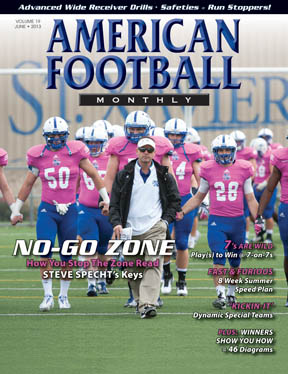Article CategoriesAFM Magazine
|
Quarters vs. the Run Game – Adding the Safetiesby: Mark ThoephelLinebackers Coach, Becker College © More from this issue Pattern-reading quarters is our most frequently used coverage scheme, as it allows us to be sound against most passing attacks and keep the box loaded to defend the run. In this way, quarters is a rather unique coverage. It gives us protection against vertical passing while allowing for up to nine defenders in the box, depending on the offensive formation. We can play cover 4 against virtually any offensive scheme and there are many variations and adjustments we can make to protect against difficult situations and formations. There are also many ways in which our quarters coverage allows us to put additional players in the box to defend the run. The main reason we run quarters so much and are able to get additional players involved in the run game is the “pattern-reading” nature of the coverage. Both of our safeties (as well ....The full article can only be seen by subscribers.
|
|
|||||||
| HOME |
MAGAZINE |
SUBSCRIBE | ONLINE COLUMNISTS | COACHING VIDEOS |
Copyright 2025, AmericanFootballMonthly.com
All Rights Reserved





